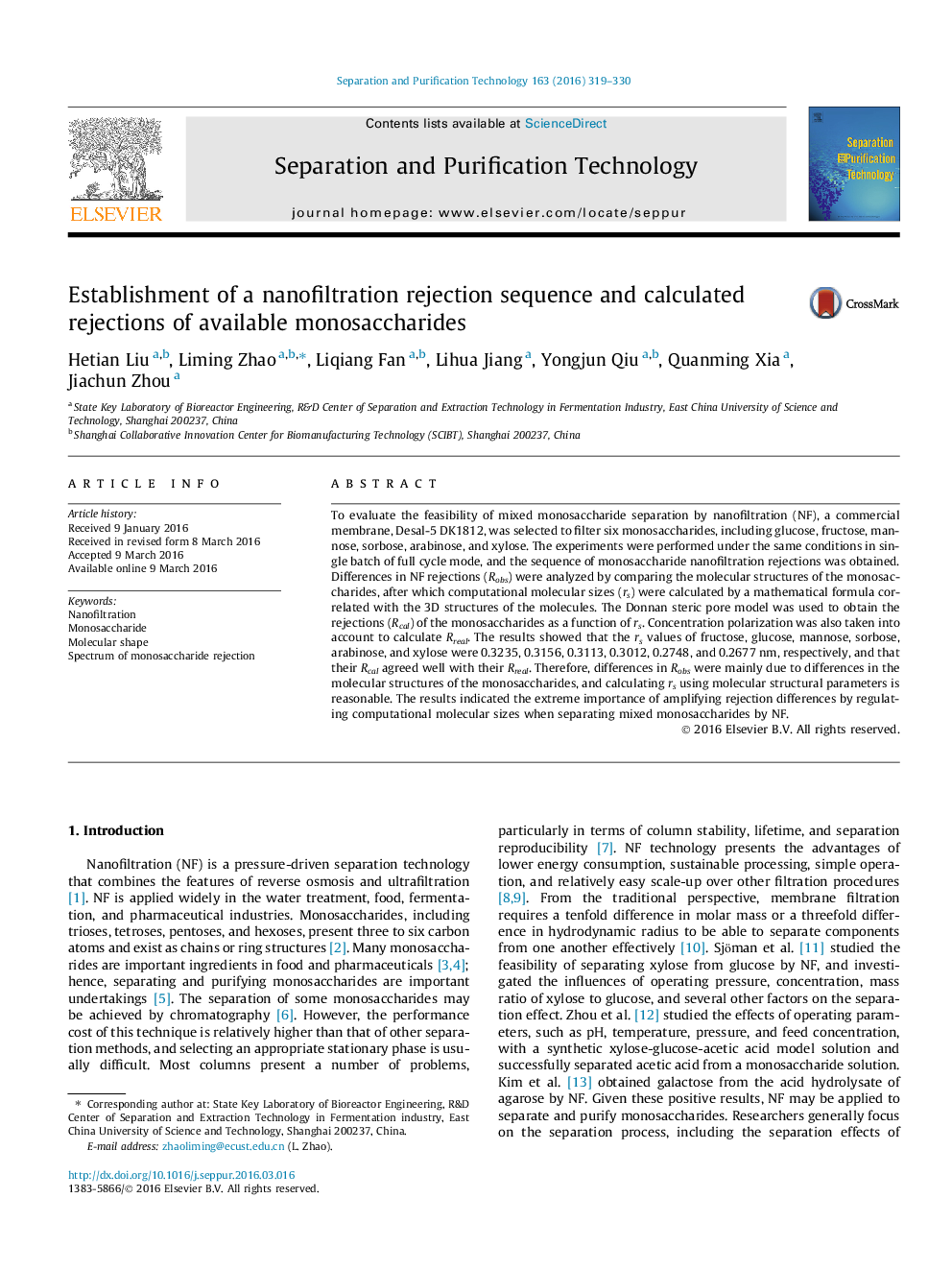| Article ID | Journal | Published Year | Pages | File Type |
|---|---|---|---|---|
| 640107 | Separation and Purification Technology | 2016 | 12 Pages |
Abstract
To evaluate the feasibility of mixed monosaccharide separation by nanofiltration (NF), a commercial membrane, Desal-5 DK1812, was selected to filter six monosaccharides, including glucose, fructose, mannose, sorbose, arabinose, and xylose. The experiments were performed under the same conditions in single batch of full cycle mode, and the sequence of monosaccharide nanofiltration rejections was obtained. Differences in NF rejections (Robs) were analyzed by comparing the molecular structures of the monosaccharides, after which computational molecular sizes (rs) were calculated by a mathematical formula correlated with the 3D structures of the molecules. The Donnan steric pore model was used to obtain the rejections (Rcal) of the monosaccharides as a function of rs. Concentration polarization was also taken into account to calculate Rreal. The results showed that the rs values of fructose, glucose, mannose, sorbose, arabinose, and xylose were 0.3235, 0.3156, 0.3113, 0.3012, 0.2748, and 0.2677Â nm, respectively, and that their Rcal agreed well with their Rreal. Therefore, differences in Robs were mainly due to differences in the molecular structures of the monosaccharides, and calculating rs using molecular structural parameters is reasonable. The results indicated the extreme importance of amplifying rejection differences by regulating computational molecular sizes when separating mixed monosaccharides by NF.
Related Topics
Physical Sciences and Engineering
Chemical Engineering
Filtration and Separation
Authors
Hetian Liu, Liming Zhao, Liqiang Fan, Lihua Jiang, Yongjun Qiu, Quanming Xia, Jiachun Zhou,
